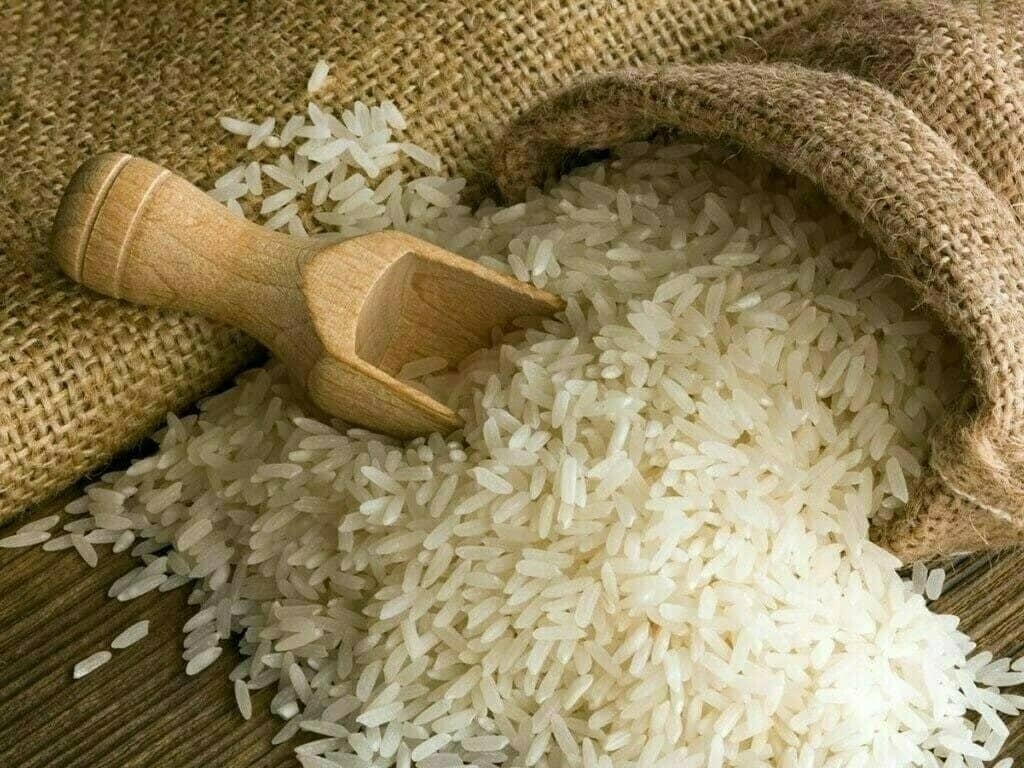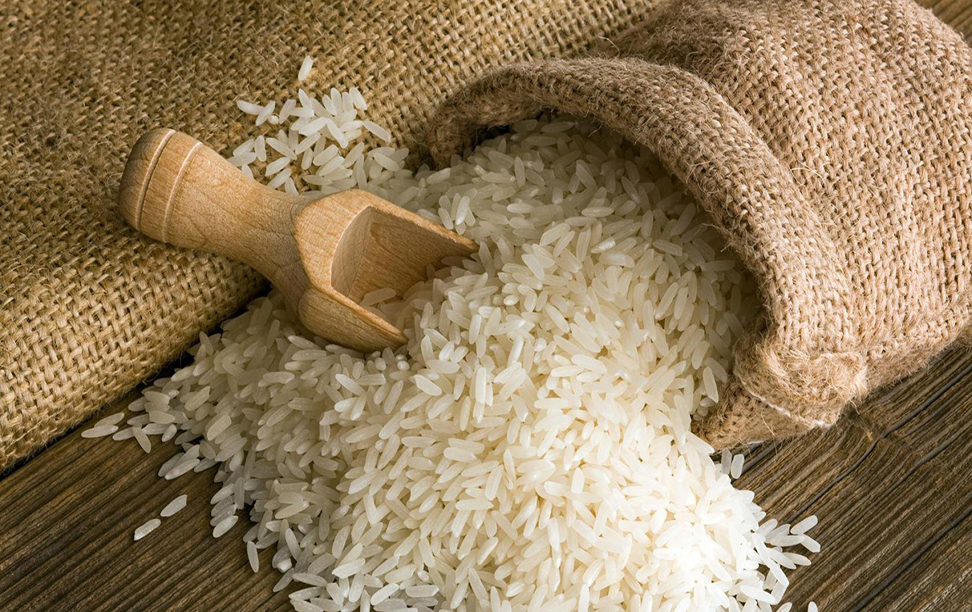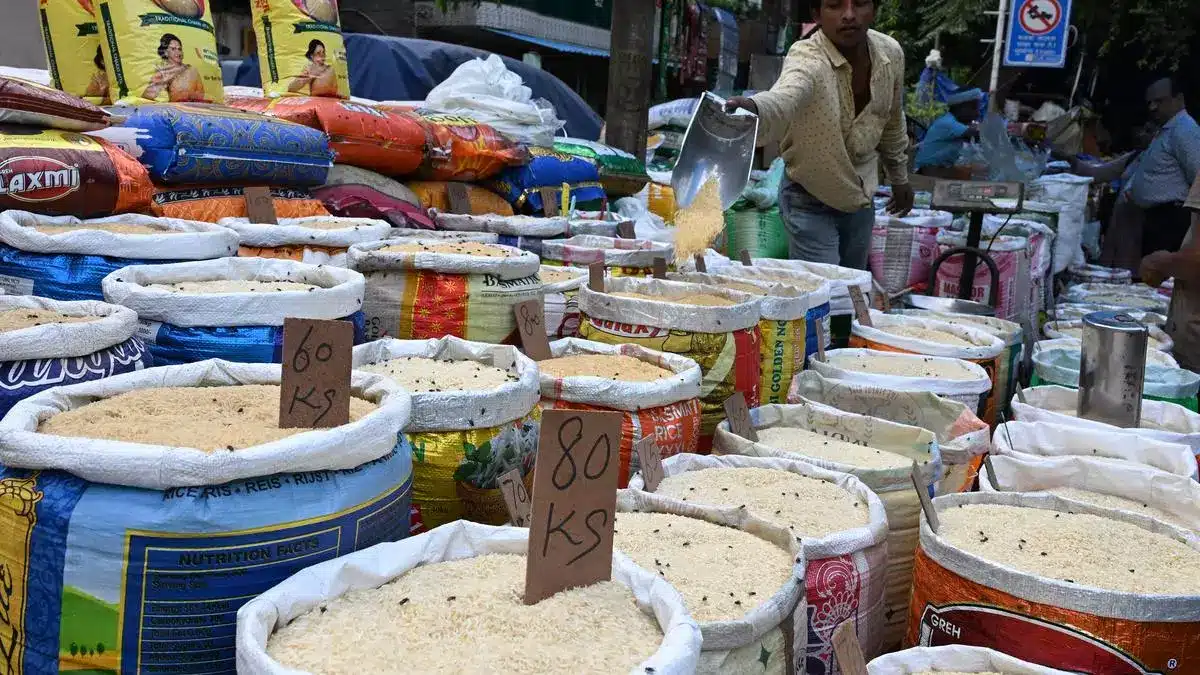Tags
Is the genetically modified, nutrient-rich Golden Rice as safe as promised?
- In April, the Philippines’ Supreme Court heeded farmers’ and activists’ calls to look into the safety promise of Golden Rice, a genetically modified grain created to tackle the vitamin A deficiency that impacts millions, over concerns about its potential impact to rice biodiversity, farmer livelihoods and human health.
- The debate over Golden Rice is long-standing and heated, spanning two decades and primarily centered in the Philippines, where it was initially approved for commercial release.
- As legal debates over its safety promise continue, the country’s Golden Rice rollout is on track and officials aim on cultivating 500,000 hectares (1.24 million acres) of the crop by 2028.
- Mongabay spoke with health experts, Filipino officials, conservationists, farmers’ groups and civil society organizations about the contentious issue.
PALAWAN, Philippines — On Aug. 8, 2013, Fernando de Chavez, along with more than 400 farmers and advocates, stormed a Golden Rice field trial site in Pili, a town in Camarines Sur province, southeast of Manila. The incident, now known as the International Day of Action Against Golden Rice, involved uprooting the genetically modified rice due to concerns over its potential environmental and social impacts, as well as possible health effects. A decade later, their anger and opposition remains unquelled.
“If necessary, we will not hesitate to repeat the uprooting of Golden Rice in our community here in Camarines Sur,” said de Chavez, spokesperson for the grassroots group SIKWAL GMO (meaning “reject GMOs” in the regional dialect), during a protest on Aug. 8, 2023, to commemorate the 10-year anniversary of the incident. “We vehemently reject it as it will not serve any purpose for our welfare and our overall mission to holistically feed our community with safe, affordable, and adequate food.”
The farmer leader is linked to MASIPAG, a network of scientists and farmers who led a petition to the Philippine Supreme Court against the commercial release of Golden Rice, known here as Malusog Rice. This rice variety’s distinct yellow-orange color comes from added beta-carotene, with turns into vitamin A in the body, to tackle the vitamin A deficiency (VAD) that impacts millions of Filipino children.
This April, the court issued a writ of kalikasan (writ of nature), acknowledging civil society groups’ concerns about Golden Rice’s potential harm to rice biodiversity and human health. “We were delighted and gained the courage to really oppose Golden Rice because the Supreme Court listened to us,” de Chavez told Mongabay by phone. Activists say the Philippines already has several alternative crops with higher beta-carotene content than Malusog Rice and should be used instead to tackle VAD.
Supporters of Golden Rice, however, say it can be “as safe as conventional rice” and that eating the genetically modified rice “offers a potent and cost-effective strategy to combat VAD” and its linked risks. These include infectious and diarrheal diseases, irreversible blindness, other sensory losses, and premature death. The crop also differs from many other GMOs in its composition, they say, and opposition to its use is done without any real scientific basis. Planting of the rice is now already underway across seven provinces with officials set to have it fully commercialized by late 2024.
The long-standing and heated debate over Golden Rice, spanning two decades and primarily centered in the Philippines, where it was initially approved for commercial release, continues unabated. Amid the Supreme Court’s intervention, ongoing discussions persist about the effectiveness of addressing VAD without adverse impacts on both humans and the environment.

‘As safe as conventional rice’?
Introduced in 2004, the Golden Rice technology involves adding two genes from maize and a common soil bacterium into white rice, with its developers later donating the technology to combat VAD in less-industrialized nations like the Philippines.
In the past three decades, VAD has led to millions of child deaths in less these countries —around 2 million each year in the early 1990s alone — though the figure fell to an estimated 105,700 by 2013. Specifically affecting children under 5, VAD still remains a global concern, even as total cases of the deficiency decreased from 877 million to 490 million from 1990 to 2019.
VAD is common in the Global South, but rare in the Global North, according to the World Health Organization. Golden Rice proponents say it arises from limited dietary diversity due to poverty, market constraints, and agronomic factors, affecting people in poorer nations who have restricted access to vitamin A-rich foods, while consumers in wealthier countries with higher incomes enjoy more diverse diets.
When a country approves Golden Rice for use, its government must assess its environmental safety for cultivation and human and animal consumption, adhering to the “precautionary principle” outlined in the Cartagena Protocol on Biosafety. This “better safe than sorry” principle also calls for restricting a product of biotechnology in the face of a possible or unknown risk. Activists see this principle as a safeguard for public and environmental health, but supporters of GMOs say it only hinders the advancement of Golden Rice research, development, release, and widespread adoption in front of unfounded claims.
In the Philippines, the Department of Agriculture’s Philippine Rice Research Institute (DA–PhilRice) is spearheading Golden Rice’s development and deployment, partnering with the International Rice Research Institute (IRRI), also headquartered in the country. The DA’s Bureau of Plant Industries issued a biosafety permit for Malusog Rice in December 2019, attesting that it’s “as safe as conventional rice” following set regulations.
Between 2016 and 2018, food safety regulators in Australia and New Zealand, Canada, and the United States reviewed the biosafety application documents for Malusog Rice and confirmed its safety for consumption, PhilRice said.
The WHO has not yet issued guidance on the consumption of biofortified foods, like Golden Rice, for preventing VAD, the organization told Mongabay.
“The biosafety of genetically modified crops is assessed by regulators worldwide using a concept … wherein genetically modified crops must demonstrate that they are the same as their parent variety with the exception of the trait that was added,” Ronan Zagado, director of PhilRice’s Golden Rice program, told Mongabay in an email. “In the case of Malusog Rice, our data shows that it is the same as its parent rice variety but with added beta carotene content.”
Plant-derived beta-carotene is a commonly occurring nutrient (think carrots), and “has been safely consumed by humans for a long time,” Zagado said.

For PhilRice and the IRRI, greater consumption of beta-carotene is important in the Philippines, where VAD affects 1.7 million to 2 million children under 5, according to the government’s 2018-2019 nutrition survey.
In July 2021, authorities approved the commercial propagation permit for Malusog Rice. A year later, pilot-scale deployment began in seven provinces, and the seeds produced in these sites will be available in other target areas by the last quarter of this year. Zagado said they’re expanding seed production through partnerships with local governments, public research and experiment centers, farmers, and growers.
During the 2023 dry season, 47 hectares (116 acres) were planted by partner seed growers, attracting attention from government agencies focused on food security and social welfare. Some local governments have included Malusog Rice in feeding, relief, and rice distribution programs, and 19 local resolutions have been passed to endorse its cultivation, according to Zagado.
PhilRice aims to achieve 500,000 hectares (1.24 million acres), equivalent to almost seven times the size of Singapore, of Malusog Rice cultivation by 2028, and is actively pursuing policy support from both national and local authorities to accomplish this goal. Malusog Rice is set for full commercialization in late 2024. The milled rice will be bought from partner farmer-cooperators and sold to the public through PhilRice branch stations and select local markets.
Having gained approval for safe consumption in numerous countries, proponents of Golden Rice foresee a similar path for Bangladesh, where cultivation is also being considered. They say this may potentially lead to a widespread adoption of the “golden diet” in other Asian countries and beyond.


‘Just like other GMOs’?
In April this year, the Philippine Supreme Court, however, heeded activists’ calls and issued a writ of kalikasan, a legal measure rooted in the country’s “precautionary principle” to protect the public’s right to a balanced and healthy ecology when confronted with potential risks and uncertainties posed by novel initiatives like genetically modified rice.
PhilRice and other government agency respondents must present scientifically backed evidence to disprove the petitioners’ assertions. The court, however, has not yet granted the petitioners’ request for a temporary environmental protection order, which would effectively suspend the project.
Health concerns are not the only worry for activists against the GMO, who also highlight the potential environmental and social impacts of introducing a genetically modified crop. MASIPAG national coordinator Alfie Pulumbarit said Malusog Rice predominantly serves corporate interests, neglects peasants, and poses a risk of genetic contamination to local rice varieties, ultimately endangering local rice biodiversity. Farmers, consistently the country’s poorest sector, cultivate more than 7,000 unique traditional rice varieties.
Although the technology was donated by Switzerland-based seed company Syngenta for “humanitarian use” and allows farmers to reuse their harvested grains as seeds for the following season (farmers thus own their seeds), activists against the crop remain skeptical. The fact that Syngenta maintains full commercial rights over Golden Rice, including all technological enhancements, lead activists to paint it with the same stroke as other GMO crops where farmers rely on corporations, who may control the seed market, for seeds.
“Although IRRI stated that it will be distributed free of charge to rice farmers in the Philippines, there is no guarantee that it will not change,” said Kartini Samon of the international nonprofit GRAIN, supporting small-scale farmers and social movements.

Proven environmental impacts of Golden Rice have not been established, and farmer and civil society concerns remain on the potential for environmental impact. They frequently look towards the experiences of other GMOs, like those that resist herbicides like glyphosate which can lead to its increased use, as observed in Argentina’s soy industry, which contaminated water sources and killed bees crucial for crop pollination. The increased reliance on herbicides forces farmers to continually have to buy it every season, while the herbicide itself is linked to potential cancer risks and the contamination of soil and water, posing a threat to diverse organisms.
However, while other GMOs may be modified to resist or produce herbicides, proponents and PhilRice maintain that this crop is different. Golden Rice hasn’t been modified to do either, and they’ve observed no impacts to pests or other species during field tests. Use of the crop will require no changes in current pest-control practices, PhilRice told Mongabay.
Since Golden Rice is yet to be commercially cultivated worldwide and has been grown solely in testing sites in the Philippines, Samon said the impact assessment done so far relies on the experiences of existing genetically modified crops.
“With its proponents already saying that Golden Rice cultivation is the same as conventional rice farming, Golden Rice only pursues capital and chemical intensive industrial farming — a field where only huge agrochemical corporations can participate and not Filipino farmers,” said Pulumbarit of MASIPAG during a public forum and nationwide protest on Aug. 8.
In Camarines Sur, de Chavez, 58, cultivates at least five traditional rice varieties. He said he worries that if these are wiped out or contaminated through cross-pollination or seed mixing, it will mean a dependence on Golden Rice. “It will be a huge burden for us small farmers, while corporations will end up reaping the benefits,” he said. “This will only further mire us in the worsening state of agriculture.”
Samon of Grain echoed MASIPAG’s concern. She said Golden Rice’s introduction in Asia, a region heavily reliant on rice as a staple food, could endanger its diverse indigenous rice varieties. In the U.S., a genetically modified rice developed by Bayer CropScience was detected in the rice supply chain in 2006, causing a huge scandal and millions of dollars in losses for farmers as the GMO was not yet licensed.
“One of the most imminent threats is the contamination of these local varieties by genetically modified Golden Rice,” she told Mongabay via email.

Any alternatives?
MASIPAG said the Philippines has several alternative crops like tomatoes, squash, malunggay, carrots, and sweet potatoes with significantly higher beta-carotene content than Malusog Rice (whose beta-carotene deteriorates quickly when stored after polishing). The group said these alternatives could benefit communities if local growers receive government support for post-production processing or marketing.
For example, MASIPAG highlighted the stark contrast in beta-carotene content between Golden Rice at 3.57 micrograms and squash at 410 micrograms, as per the Philippines’ Food and Research Institute. To get the required daily recommended amount of vitamin A, one would need to consume at least 8.8 kilograms (19 pounds) of Golden Rice in a day, the group said.
“Better options” to combat vitamin A deficiency in the country also include various green and leafy vegetables like saluyot (jute mallow), alugbati (Malabar spinach), gabi (taro), and kangkong (water spinach), which are rich in beta-carotene and other essential nutrients. Promoting organic cultivation of these vegetables and providing seeds or planting material is a cost-effective approach, instead of investing millions in Golden Rice research and development, advocates say.
“The beta-carotene found in Golden Rice can be obtained from simple vegetables that we have been cultivating as organic farmers for a long time,” said Virginia Nazareno, an organic farming advocate and leader in Quezon province.
Although the Philippine Society of Nutritionist-Dietitians, Inc. (PSND), agreed that these alternative crops can increase vitamin A intake and that the government should support farmers to distribute these crops to markets where people can easily access them, it said Malusog Rice should still be available.
“For low-income households, rice would comprise as much as 80% (or more) of their caloric intake,” said PSND president Ma. Cristina Sison. “If rice is the only food on the table for a family that cannot afford to buy fruits and vegetables, then it would help if that one food that they can afford and eat is able to provide Vitamin A (and other micronutrients) to allow them to meet their daily nutrient requirements.”


The Philippines’ sluggish uptake of environmentally sustainable farming poses an extra challenge to cultivating vitamin A-rich crops and ensuring continuous local accessibility. Public data show only 251 out of the country’s 1,489 municipalities have organic agriculture programs, and only around 350,000 hectares (864,000 acres), or less than 5%, of the country’s total agriculture land have been devoted to organic farming, despite a law mandating the widespread promotion of this farming mode among local communities, including those with high incidences of VAD. Farmers are reticent to take on low initial yields, a lack of access to markets, difficulties in obtaining organic certification for their products, and limited funding allocated to organic farming by the government, citing these as key barriers slowing the adoption of organic farming.
“The government should … advocate for the rights of us small-scale farmers,” added Nazareno of the Intercontinental Network of Organic Farmers Organisations, “because we are the backbone of our country’s agriculture.”
https://news.mongabay.com/2023/09/is-the-genetically-modified-nutrient-rich-golden-rice-as-safe-as-promised/Published Date: September 12, 2023







